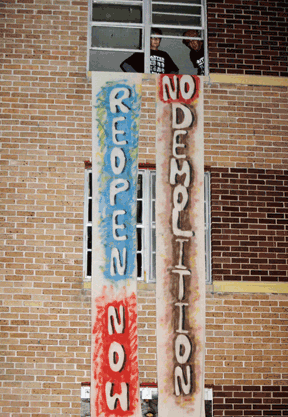Bush’s remedy was in fact a business plan that suggested to investors that they might want to think about how much money they’ll lose in a foreclosure and reduce their returns now to head it off. It’s a reasonable business calculation, if you are a bank. But for the White House — a public institution responsible for the well-being of the nation — it was little more than a public-relations stunt.
Even some of the critics got fooled, declaring that the Bush plan didn’t go far enough because too many borrowers would fail to be “covered” by the rate freeze. But their complaints ultimately helped shift the news media’s understanding of what Bush was really doing. Consumer activists, and then the Democratic presidential candidates, pointed out that even if banks and investors went along with the proposed rate freeze, it would have excluded most subprime borrowers, including those who are in the deepest trouble, already delinquent on their mortgage payments and facing foreclosure.
Of the perhaps 2 million ARMs that are expected to reset through the end of 2009, only 240,000 of them —12 percent — would be covered by a freeze, according to Barclays Capital, as reported in The New York Times. The Center for Responsible Lending estimated that only 145,000 households would qualify for Bush’s proposed rate freeze. Most borrowers would still be on their own to negotiate with their lenders.
“This is not a homeowner bailout,” John Taylor, president of the National Community Reinvestment Coalition, a consumer-advocacy group, told the media. “This is a bailout for failed regulatory oversight. Infectious greed and malfeasance by lending institutions is the overwhelming culprit, not consumer misbehavior.”
“It’s very disappointing,” Michael Shea, executive director of ACORN Housing, explained to reporters. “Wall Street has made billions and now they’re hardly paying anything at all” for their role in the subprime crisis.
Bush, who once touted his administration’s goal as creating an “ownership society,” may now go down in history as the president on whose watch homeownership declined. Starting with President Bill Clinton and continuing under President Bush, the nation’s homeownership rate grew, especially among African Americans and Latinos. But that growth was based in large part on a fragile foundation of subprime and predatory loans. Since 2005, the homeownership rate has fallen for all racial groups and will plummet further this year and next year. Moreover, Bush’s unwillingness to take bold steps to regulate lenders, brokers, and investors will guarantee that the next president will inherit a much bigger mortgage mess.
The mortgage meltdown has serious ripple effects. Studies reveal that foreclosures increase violent crime in neighborhoods. Houses become vacant, deteriorate into eyesores, and detract from the feeling of well-being in neighborhoods. Vacant houses attract crime and make it more difficult for neighbors to purchase homeowner insurance.
Property values, and thus local property-tax revenues, plummet, making it harder for cities to provide good schools, police protection, and other services. As a result, a number of cities have recently sued lenders, contending that their practices discriminated against black borrowers and led to a wave of foreclosures that has reduced city tax revenues and increased municipal costs. Baltimore is suing Wells Fargo; Cleveland is suing 21 lenders, including such high-profile companies as Citigroup, Bank of America, Wells Fargo, Merrill Lynch, and Countrywide Financial.
According to a report by the U.S. Conference of Mayors, the weak housing market, and the large inventory of unsold homes, will likely reduce home values by $1.2 trillion this year. About half of that decline is attributable to the sharp increase in foreclosures The report predicts that home prices will decline by 7 percent in 2008, ranging as high as 16 percent in California, sales of existing homes will fall by 10 percent and housing starts will fall off. In turn, the weak housing market, lay-offs in the financial industry, and the reluctance of lenders to make loans are careening the nation into a recession.
“Subprime” and “Predatory” Lending
The mortgage meltdown is the result of two distinct but overlapping practices by the nation’s lenders and investors.
The first is the dramatic growth in subprime lending. The other is the wave of predatory lending. The media has typically confused these two phenomena, but they are different and require different remedies.
“Subprime” is the financial industry’s term for high-interest loans to people who would otherwise be considered too risky for a conventional loan. These include middle-class families who have accumulated too much debt, and low-income working families who want to buy a home in the inflated housing market. Many subprime loans carry adjustable rates, starting low and jumping sharply after a few years. Subprime loans typically have higher application, appraisal, and other fees, as well as higher mortgage insurance payments, principle and interest payments, late fees, and fines for delinquent payments.






This issue really gets hot with me. I used to live in Chicago, before I lost my home, and now, I am living in Wisconsin Dells where home prices are not even that low, yet. They are better, but there’s a trade off between what I live in before and what I live in now.
Greedy bankers and investors take too much, including my house, my friends’ houses, and many other people’s houses. Enough is enough
Johnathan who operates a Wisconsin Dells Hotels consulting service.